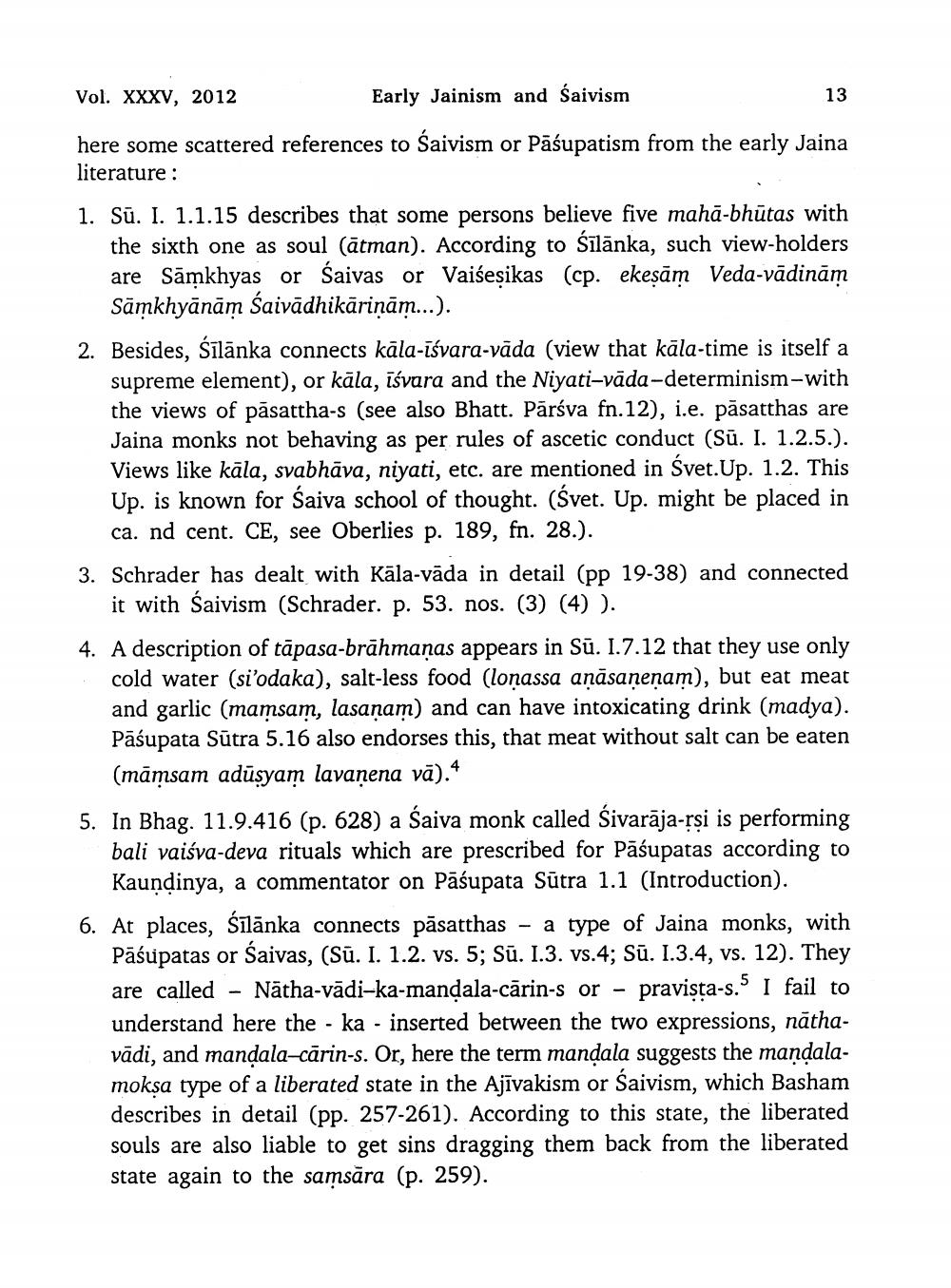________________
Vol. XXXV, 2012
Early Jainism and saivism
13
here some scattered references to Saivism or Pāśupatism from the early Jaina literature: 1. Sū. I. 1.1.15 describes that some persons believe five mahā-bhūtas with
the sixth one as soul (ātman). According to śīlānka, such view-holders are Sāmkhyas or Saivas or Vaišeşikas (cp. ekesām Veda-vādinām
Sāmkhyānām saivādhikāriņām...). 2. Besides, śīlānka connects kāla-īśvara-vāda (view that kāla-time is itself a
supreme element), or kāla, īśvara and the Niyati-väda-determinism-with the views of pāsattha-s (see also Bhatt. Pārsva fn.12), i.e. pāsatthas are Jaina monks not behaving as per rules of ascetic conduct (Sū. I. 1.2.5.). Views like kāla, svabhāva, niyati, etc. are mentioned in Svet.Up. 1.2. This Up. is known for Saiva school of thought. (svet. Up. might be placed in
ca. nd cent. CE, see Oberlies p. 189, fn. 28.). 3. Schrader has dealt with Kāla-vāda in detail (pp 19-38) and connected
it with Saivism (Schrader. p. 53. nos. (3) (4) ). 4. A description of tāpasa-brāhmaṇas appears in Sū. 1.7.12 that they use only
cold water (si'odaka), salt-less food (lonassa aņāsaņeņam), but eat meat and garlic (mamsam, lasanam) and can have intoxicating drink (madya). Pāśupata Sūtra 5.16 also endorses this, that meat without salt can be eaten
(māmsam adūsyam lavaṇena vā).* 5. In Bhag. 11.9.416 (p. 628) a Saiva monk called śivarāja-rsi is performing
bali vaišva-deva rituals which are prescribed for Pāśupatas according to Kauņdinya, a commentator on Pāśupata Sūtra 1.1 (Introduction). At places, śīlānka connects pāsatthas - a type of Jaina monks, with Pāśupatas or saivas, (Sū. I. 1.2. vs. 5; Sū. I.3. vs.4; Sū. I.3.4, vs. 12). They are called - Nātha-vādi-ka-mandala-cārin-s or - pravista-s." I fail to understand here the - ka - inserted between the two expressions, nāthavādi, and mandala-cārin-s. Or, here the term mandala suggests the mandalamoksa type of a liberated state in the Ajīvakism or Saivism, which Basham describes in detail (pp. 257-261). According to this state, the liberated souls are also liable to get sins dragging them back from the liberated state again to the samsāra (p. 259).




